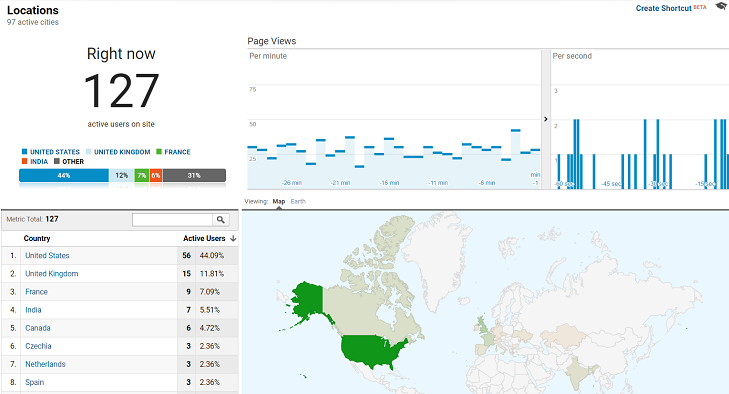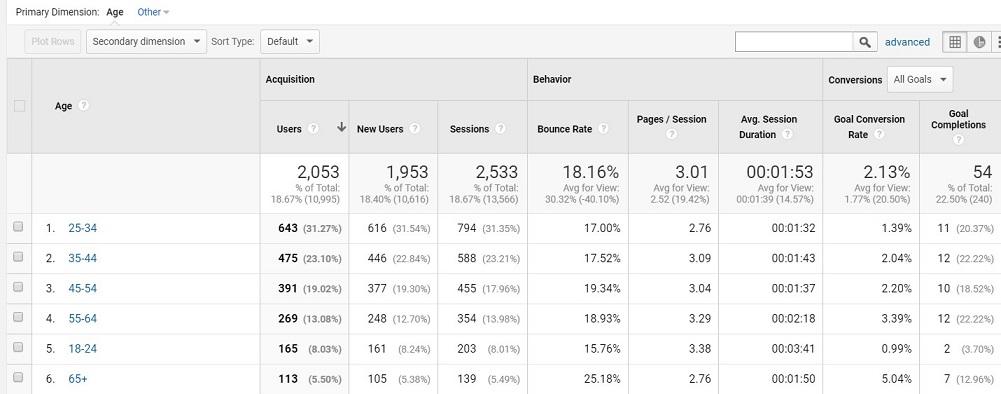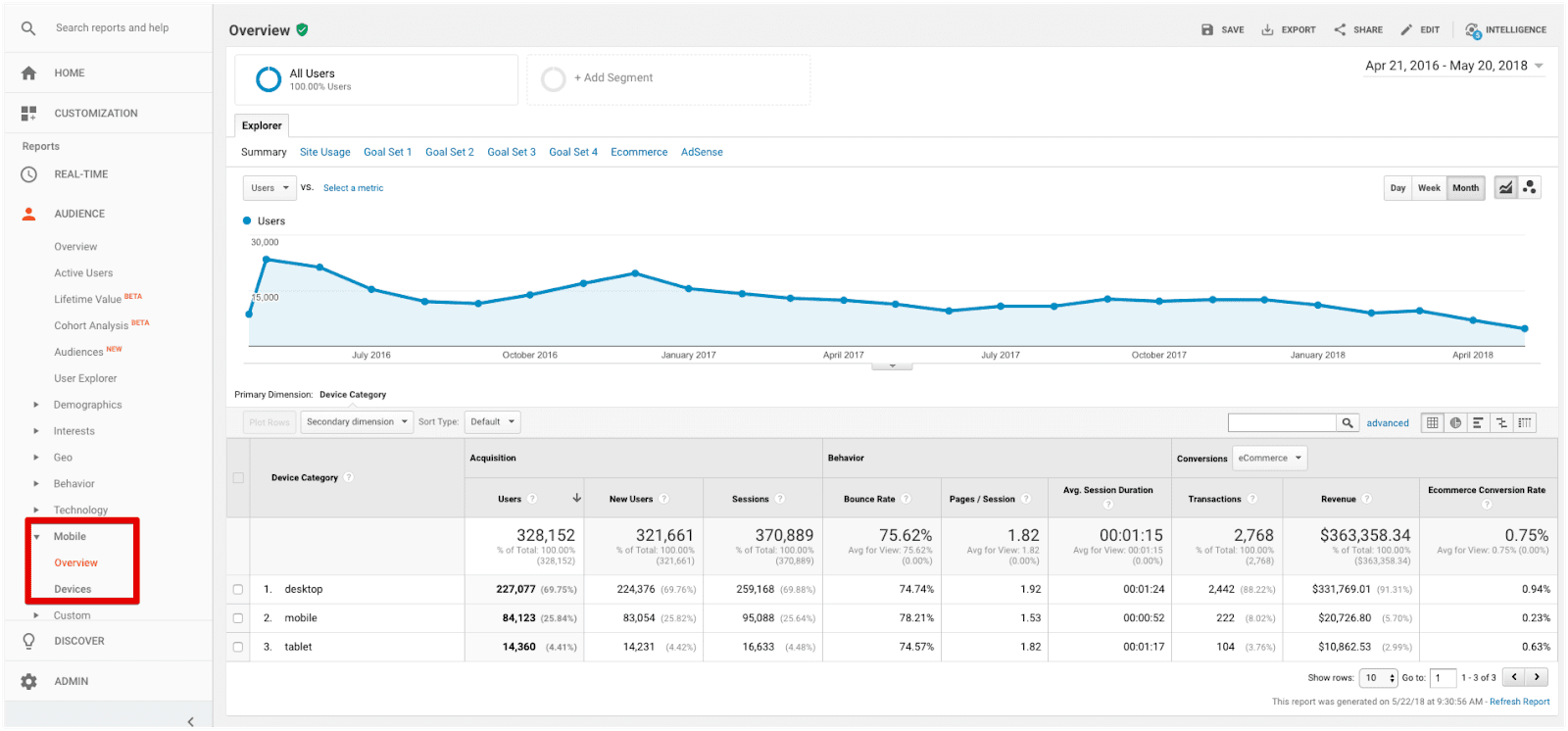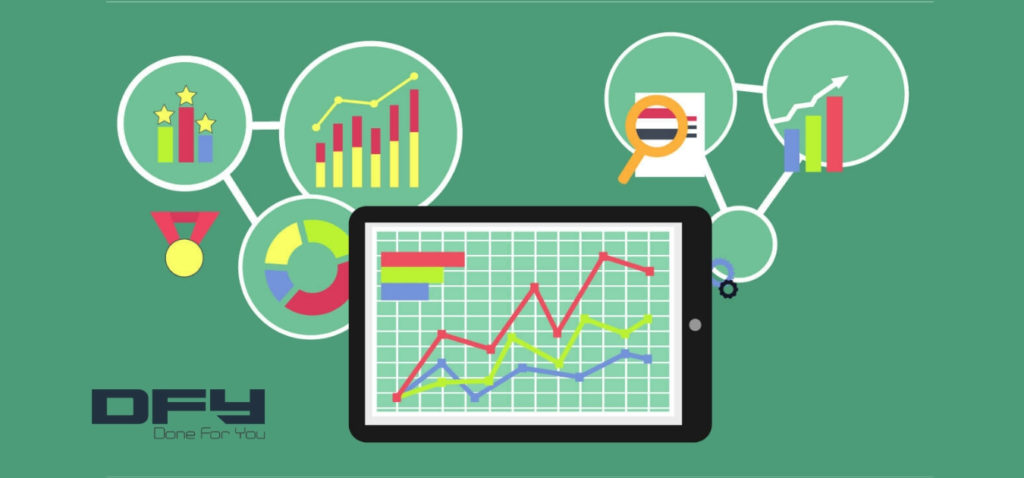There is a saying… If you cannot measure, then you cannot improve. Without analytics data, it is not possible to show the effects of your SEO strategies to your online business. Luckily, you can use Google Analytics as a standard tool to measure the performance of your website.
Google Analytics lets you track both the progress and performance of that site. It’s a basic tool and a perfect addition to our advanced analytics suite, Axis.
Most importantly, Google Analytics provides you access to a pool of important data, such as
- how users find your site and
- how they interact with it.
This beginner’s guide to Google Analytics explains the type of information Google Analytics provides and how it will help your online business. The 5-minute guide to Google Analytics also explains how web analytics can help you make important business decisions.
The type of information Google Analytics provides
One of the greatest features in Google Analytics is the inclusion of custom dashboards. This allows you to develop custom dashboards for your websites. Here you can include any metric you might be interested in. Besides that, you can also select how you want the information to be displayed.
Google Analytics dashboard may look similar to this:

The information is displayed as reports, which include:
1. Real-Time Reports
This Real-Time Report shows information about who visited your website and what they did. So, you will know how many people viewed and read the great post you just published. Further, you will know how many people watched the video you uploaded recently.
There are different real-time reports. Some of them are:
i) Locations
Here you will know the location of your site viewers. Most importantly, you will see the page they have visited and how long they stayed there.

ii) Content
This section lets you know where visitors land on your website and how long they stay there. This means you will know the page URL, title and all the active users on a certain page (mostly in percentage).
iii) Traffic Sources
This section lets you know how visitors found your website. They could have found it via your new social post. Or they found it by typing your URL.
Traffic sources are very important in real-time. It indicates the traffic that your new social media post has generated. More so, it shows how a brand-spanking page is performing.
iv) Conversions
Every time you implement a business strategy, people will want to see whether or not it increased conversions. Luckily, real-time reports will provide that information.
This means you will see your top goals and the number of users that completed them (in percentage). Essentially, you will view this information either in the last 30-minutes or in real-time.
2. Audience Reports
This part categorizes users based on specific parameters.
Would you like to see how many users carried out a website search? Or those who bought a product/service in the last 12 months, but they did not do so in the last 14 days?
If yes, then you can get all that information – thanks to Google Analytics. This information is highly beneficial to online businesses. It can help in targeting certain sections of your audience.
However, you should take note of 2 vital features.
- For one, you must clearly define the kind of audience you would like to track.
- Second, Google currently launched a new Audience Report. It lets you view how those audiences respond to your remarketing campaigns.
Nonetheless, the audience reports show different information such as:
i) Active Users
Here, you will be able to track audiences who have visited your website in the last one, seven, 14 or 30 days. As such, you will be able to measure audience interest.
ii) Audiences
This lets you develop more granular audiences and use them in any other section of your Google analytics report. Nevertheless, you can only develop and apply a maximum of 20 audiences at once.

iii) Interests
Apart from knowing the number of audiences who visited your site, you should be able to know their interests. Well, Google Analytics gives you that chance.
However, you must enable your remarketing & advertising reporting features to get started.
Once you do, you can view user data depending on (examples):
- In-Market Segments: covers those interests related to a product like “baby & kids products” or “Hotel/travel accommodations.”
- Affinity categories: broad lifestyle groups like “Value Shoppers” or “Food & Dining Enthusiasts.”
- Other categories: more specific groups like “Pets” or “Hair Care.”
3. Behavior
Once you know the interest of your audience, the next thing is to know their behavior. The Behavior Reports shows information on how your users act once they visit your site. In addition, you will know how they used site search, how fast/slow pages loaded, and the content they viewed, and so on.

This kind of information is important for online businesses as they can uncover areas where their sites are not performing as planned.
4. Acquisition
The Acquisition Report offers detailed information on how users found your website. You will know what they did on the site. For instance, you will know whether they took certain actions like filling out forms.

Why Google Analytics is important for business decisions
To know why Google Analytics is important in making business decisions, we will take an example.
Let’s assume you want to know whether or not you should develop a mobile version of your business website.
As aforementioned, the Analytics suite lets you know your site viewers. So you will know those who used a mobile device and those who used other devices. Just sign in to your Analytics account and choose the last 1 year.
Navigate to Audience Reports>Mobile>Overview.
Once you do so, you will get a table indicating the number of audiences using a mobile device.

Google Analytics statistics go like this:
In our illustration, 84,123 visits (25.84%) of all site visits in that period of time come from mobile devices. Plus, another 14,360 or 4.41% came from tablets. The bounce rate of visits coming from mobile devices is 78.21% above the average of about 74% on other devices.
If you make a comparison of the data from mobile visits and non-mobile ones, you will clearly note that the data from mobile visits is slightly worse.
Hence, the GA statistics firmly suggests that further improving the mobile version of your business site may be needed right away This is because a significant portion of users use their mobile devices to view your website but more than expected abandon your website too soon.
5-minute guide to Google Analytics – Your next steps
As you can see in this guide, Google Analytics provides lots of information, which might be overwhelming if you barely know what you want. The most important part is to translate that information in a way that will benefit your online business. If you do not understand the basics of Google Analytics, then you should find an expert to implement it for you.
Nonetheless, Google Analytics is an extremely powerful tool that can assist online businesses to make decisions. When you have to make a new decision, you should first understand the information available in Analytics.
The second action is to raise a question and determine what information can answer that question. Lastly, you should segment as well as manipulate the information to find the right answer.
Axis – Advanced analytics
If you want a complete web analytics solution, that can work along with Google Analytics or standalone, then Axis is a tool that you would appreciate. What makes Axis analytics unique is that it offers patent-pending, real-time “opportunity-based” analytics that track visitors through your website and sales funnel so you can improve conversions and optimize their sales experience.
This is not about meaningless data; Axis is a tool that helps you understand what’s going on in your business, and what action you should take to improve sales results. Click here to book a demo.
